Richard Critchfield
- 1970
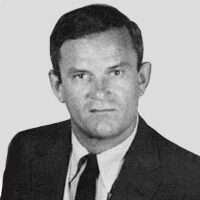
Fellowship Title:
- Food Population Crisis in India, Indonesia and Iran
Fellowship Year:
- 1970
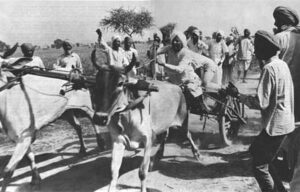
Sketches Of The Green Revolution – Part III
A study in four parts of the human impact of the new seeds and methods of cultivation in Ghungrali-Rajputan, a prosperous farming village on the Punjab Plain in Northwest India Part Three: Jats And Harijans:The Bullock Cart Race On the afternoon of 12th April, a day before Baisaki, when the harvest traditionally began, the Jats invited farmers from all the neighboring villages to compete in a bullock cart race, the first ever held in Ghungrali. The invitation had gone oat before the Jats had declared their boycott of the Harijans and banned them from their fields and the Harijans had retaliated by threatening to help no Jat with his harvest, at whatever terms. And so there was uneasiness that there might be trouble when everyone started drinking and crowding together to watch the race. But no one need to have worried; both the Jats and Harijans were relieved at the chance to enjoy themselves and forget, for a moment, the hard labor of the harvest to come and the gathering tension in the village.
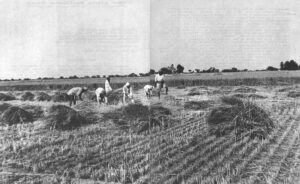
Sketches Of The Green Revolution – Part II
A study in four parts of the human impact of the new seeds and methods of cultivation in Ghungrali-Rajputan, a prosperous farming village on the Punjab Plain in Northwest India Part Two: The Seeds Of ChangeGreen Revolution Everyone said Basant Singh, the richest farmer in Ghungrali, was as hard as flint. While the other villagers might fritter away their days in gossip, drink, chasing women, petty quarrels and the like, it was said Basant Singh’s thoughts never strayed from economy of operations and returns. In matters relating to religion, politics, morality and money, he was harsh and relentless and kept a strict watch, not only over himself and his family but over his servants, laborers and acquaintances and, indeed, the whole village. God forbid that anyone should go into his office off the veranda without being announced by someone. This office was like Basant Singh himself and, needless to say, was the only one in the village. Straight-backed wooden chairs stood at attention in rows along two walls below framed photographs of the office’s occupant
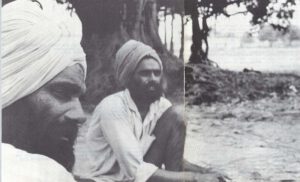
Sketches Of The Green Revolution – Part I
A Study of the Human Impact of the New Seeds and Methods of Cultivation in Ghungrali-Rajputan, a Prosperous Village on the Punjab Plain in Northwest India Part One: Charan As a team of oxen are we drivenBy the ploughman, our teacherBy the furrows made are thus writOur actions – on the earth, our paper.The sweat of labor is as beadsFalling by the ploughman as seeds sown.We reap according to our measureSome for ourselves to keep, some to others give.O Nanak, this is the way to truly live. — From The Granth Sahib, the sacred scripture of tri Sikh religion Contents I CHARAN Morning Two Old Friends The Mela The Massacre CharanHonor Il SEEDS OF CHANGE Green Revolution The Hunt The Storm III JATS AND HARIJANS The Bullock Cart Race The Boycott IV THE HARVEST Reaping Threshing Evening Introductory note: In an Article, “INTO THE 1970s” published in its December 27 1969 issue, the London Economist noted: The 1970s have already been indelibly marked by the 1960s, but they will have their own
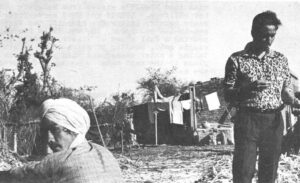
The Thorn
A Play in Eleven Scenes Ludhiana, Punjab April 8, 1970 Home is the place whereWhen you go thereThey have to take you in — From Robert Frost’s “Death of the Hired Man” (Introductory note: The Punjab plain, a vast expanse of flat, fertile wheat land extending from Delhi to Peshawar, has historically borne the brunt of almost all foreign invasions of India. From the Aryans to Alexander, the Mongol hordes to the Moghuls, Punjab has been the traditional route of entry by India’s conquerors, who followed a path along what has become known as the Grand Trunk Road down onto the great, populous cities of the Gangetic Plain. A battleground throughout its five thousand year history, Punjab was also the scene of the partition holocaust of 1947, when within four months six million were uprooted and another million died in the exchange of Moslem, Hindu and Sikh populations forced by the creation of the separate states of India and Pakistan. Again, eighteen years later, Punjab’s green fields once more heard the Sikhs war cries
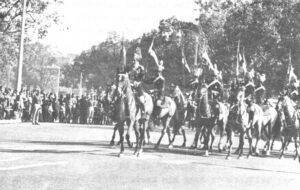
India Revisited
New Delhi February 15, 1970 Pick your step carefully down a crushed cinder path bordered with pink rosebushes that somehow survive the cold north India winter. A patch of sparse green lawn and bare sandstone platform set into a desiccated plain, sunny, brown and empty, with dust lapping up from the banks of the Jumuna River and carling around the red sandstone ramparts of Shah Jehan’s vast-Moghul fortress. Minarets and marble domes, hazed with smoke from a thermal station, form the city skyline over tenements festooned with laundry. There is an air of solemn distinction about the place as three peasants, huddled and shapeless in their cotton shawls and blankets, approach to throw marigolds on the consecrated ground. It is paradoxical, as so much is in India, to see these deeply conservative and religious rustics paying reverence to the avowed agnostic who was so determined to break through their ancient ways to modernization daring the seventeen years he ruled India. Jawaharlal Nehru, with his sense of form and elegance, might well be appalled
